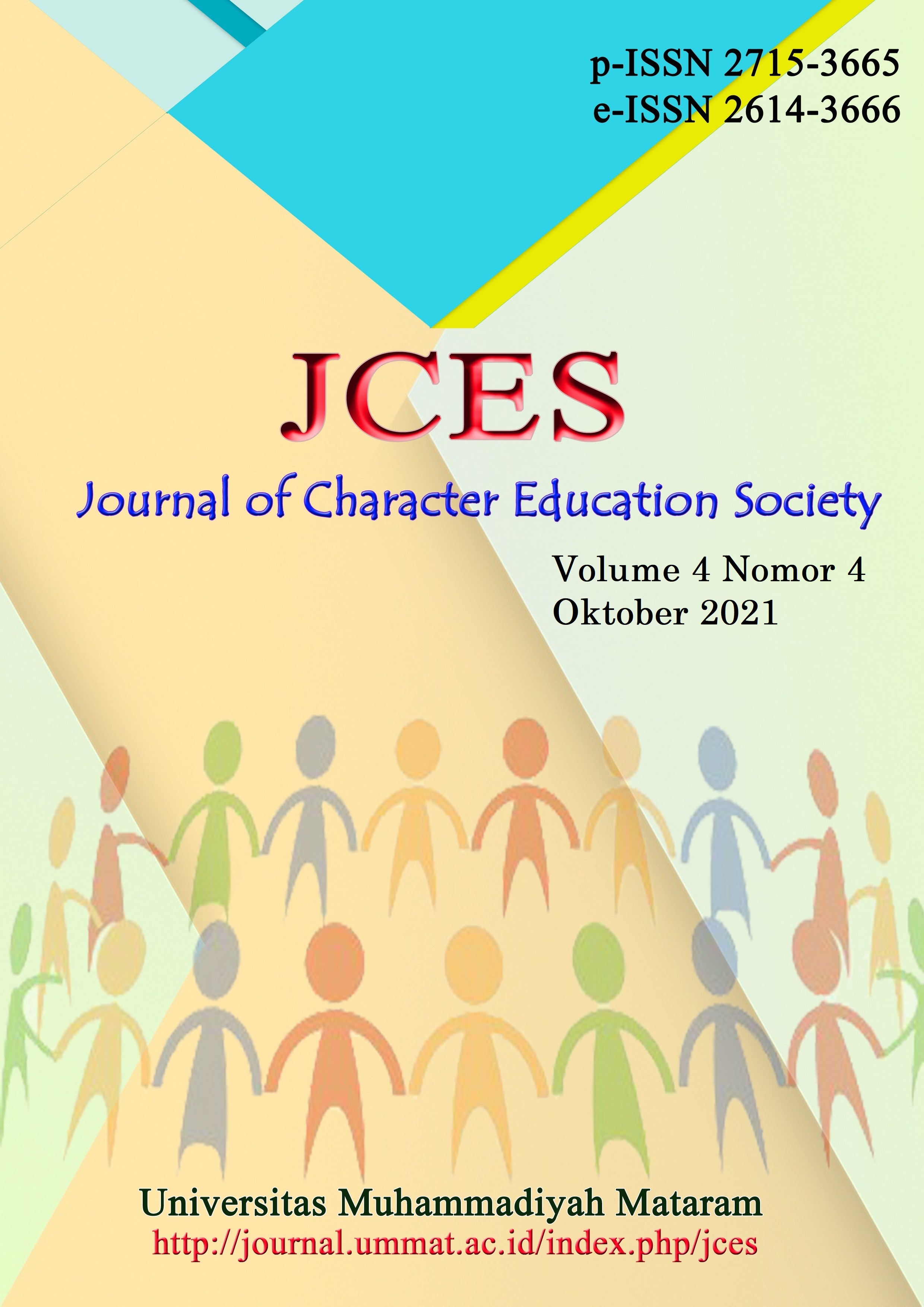INDUCTION OF TECHNOLOGY AS A MEANS OF IMPROVING BUSINESS COMPETITIVENESS IN CREATIVE INDUSTRY
DOI:
https://doi.org/10.31764/jces.v4i4.5682Keywords:
Industri Kreatif, Meubel, TIK, Website.Abstract
Abstrak: Mitra dalam program kemitraan masyarakat ini merupakan UMKM yang bergerak dibidang industri kreatif. UMKM yang berlokasi di Kecamatan Ngemplak Kabupaten Boyolali ini, berfokus menghasilkan produk-produk berbasis meubel. Tujuan induksi teknologi ini untuk mendorong produktivitas dan kreativitas UMKM sehingga dapat dimanfaatkan untuk meningkatkan daya saing usaha. Secara khusus, penerapan induksi teknologi ini berbentuk implementasi website penjualan untuk memperluas pemasaran. Tahapan pelaksanaan kegiatan menggunakan metode 4P yaitu Pengamatan permasalahan mitra, Penerapan induksi teknologi, Pelatihan mitra dan Pendampingan mitra. Hasil yg diperoleh dari kegiatan ini adalah telah terbangunnya website dengan CMS WordPress dan berbasis bahasa pemrograman PHP untuk UMKM mitra. Selanjutnya diadakan pelatihan penggunaan website tersebut. Peserta antusias dalam mengikuti kegiatan yang telah dilakukan oleh tim pengabdi. Hal ini dapat dilihat pada saat kegiatan terjadi interaksi antara peserta dengan pemateri.
Abstract:Â Partners in this community partnership program are MSMEs engaged in the creative industry. This UMKM, which is located in Ngemplak District, Boyolali Regency, focuses on producing furniture-based products. The purpose of this technology induction is to encourage the productivity and creativity of UMKM so that they can be used to increase business competitiveness. In particular, the application of this technology induction takes the form of implementing a sales website to expand marketing. The stages of implementing the activities using the 4P method are Observing partner problems, Application of technology induction, Partner training, and partner assistance. The results obtained from this activity are the construction of a website with a WordPress CMS and PHP-based programming language for partner MSMEs. Furthermore, training on the use of the website was held. Participants were enthusiastic in participating in the activities carried out by the service team. This can be seen when the activity occurs when there is an interaction between participants and presenters.
References
Batra, R., & Keller, K. L. (2016). Integrating marketing communications: New findings, new lessons, and new ideas. Journal of Marketing, 80(6), 122–145. https://doi.org/10.1509/jm.15.0419
Dewi, R. P., Muryani, C., & Sarwono. (2015). PERUBAHAN DAYA DUKUNG LAHAN KABUPATEN BOYOLALI TAHUN 2003 - 2012 Ratih. GeoEco, 1(1), 47–57.
Fahmi, F. Z., Koster, S., & van Dijk, J. (2016). The location of creative industries in a developing country: The case of Indonesia. Cities, 59, 66–79. https://doi.org/10.1016/j.cities.2016.06.005
Fahmi, F. Z., McCann, P., & Koster, S. (2017). Creative economy policy in developing countries: The case of Indonesia. Urban Studies, 54(6), 1367–1384. https://doi.org/10.1177/0042098015620529
Hafiar, H., & Lukman, S. (2018). Optimalisasi Kegiatan Promosi Melalui Grup Whatsapp (WAG) Dalam Menjaring Calon Peserta Pesantren Kilat. Promedia, 4(1), 56–75.
Hanoatubun, S. (2020). DAMPAK COVID – 19 TERHADAP PEREKONOMIAN INDONESIA. EduPsyCouns Journal, 2(1), 146–153.
Haryoto, Muhtadi, & Rauf, R. (2020). PETERNAK KAMBING DESA SINDON KECAMATAN NGEMPLAK BOYOLALI. Jurnal Layanan Masyarakat, 4(1), 36–42.
Heryani, H., Legowo, A. C., & Nugroho, I. P. (2020). Strategi Pengembangan Industri Kreatif untuk Inovasi. Jurnal Teknologi Industri Pertanian, 30(3), 290–298. https://doi.org/10.24961/j.tek.ind.pert.2020.30.3.290
Iswardani, A., Sudibyo, N. A., & Hidayat, W. (2020). PELATIHAN MEMBUAT HTML DESA KECAMATAN CEMANI KABUPATEN SUKOHARJO. KOMMAS: Jurnal Pengabdian Kepada Masyarakat, 1(2), 53–59.
Jones, C., Lorenzen, M., & Sapsed, J. (2015). Creative industries: A typology of change. Oxford Handbook of Creative Industries, February, 1–38.
Pratiwi, D., Santoso, G. B., Mardianto, I., Sediyono, A., & Rochman, A. (2020). Pengelolaan Konten Web Menggunakan Wordpress , Canva dan Photoshop untuk Guru-Guru Wilayah Jakarta Web Content Management Using Wordpress , Canva and Photoshop for Teachers of the Jakarta Region. Jurnal Ilmiah Pengabdian Pada Masyarakat, 2(1), 12.
Rahman, N., & Fujiaturahmah, S. (2020). Pelatihan Pengembangan Media Pembelajaran Berbasis Web Bagi Guru Smp. Journal of Character Education Society, 3(3), 621–630.
Rosanna, L., Saputra, C., Lestari, E., Permatasari, I. A., & Fitri, E. (2021). COMMUNITY PROGRAM : IMPLEMENTATION OF COMPUTER BASED NURSING DOCUMENTATION WITH ANNISA APPLICATION Wawancara dengan Kepala Puskesmas Rumbai Bukit menyatakan. Journal of Character Education Society, 4(1), 87–97.
Valerisha, A., & Putra, M. A. (2020). Pandemi Global COVID-19 dan Problematika Negara-Bangsa : Transparansi Data Sebagai Vaksin Socio-digital ? Jurnal Ilmiah Hubungan Internasional, 131–137. https://doi.org/10.26593/jihi.v0i0.3871.131-137
Wiryono, S. K., Susatyo, H., Utomo, S., Suryanta, B., Sudrajad, O. Y., Lazuardi, K. M., & Yuanita, H. (2015). Risk Mapping on Dynamics Creative Industry: Case Study at Bandung City, Indonesia. Procedia - Social and Behavioral Sciences, 169(August 2014), 125–130. https://doi.org/10.1016/j.sbspro.2015.01.292
Yuliana, O. Y. (2000). Penggunaan Teknologi Internet Dalam Bisnis. Jurnal Akuntansi Dan Keuangan, 2(1), 36–52. https://doi.org/10.9744/jak.2.1.pp.36-52
Downloads
Published
Issue
Section
License
Authors who publish articles in JCES (Journal of Character Education Society) agree to the following terms:
- Authors retain copyright of the article and grant the journal right of first publication with the work simultaneously licensed under a CC-BY-SA or The Creative Commons Attribution–ShareAlike License.
- Authors are able to enter into separate, additional contractual arrangements for the non-exclusive distribution of the journal's published version of the work (e.g., post it to an institutional repository or publish it in a book), with an acknowledgment of its initial publication in this journal.
- Authors are permitted and encouraged to post their work online (e.g., in institutional repositories or on their website) prior to and during the submission process, as it can lead to productive exchanges, as well as earlier and greater citation of published work (See The Effect of Open Access).

